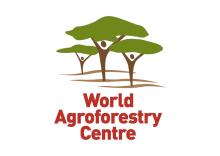Resource information
The Agroforestry for Livelihoods of Smallholder farmers in Northwestern Viet Nam project (2011-2016) focuses on agroforestry trials on farms in the northwestern mountainous region of the country. The objective of the study was to make an inventory of the current upland farming systems and identify key strengths and weaknesses of each system, including economic efficiency. The farming system diagnosis was based on participatory assessments and focus group discussions and in- depth interviews with 45 project ‘farmer co-operators’ in 17 villages in Yen Bai, Son La and Dien Bien provinces.
The inventory identified over 20 different farming systems. However, regardless of agro-eco-zones and ethnicity, the predominant land use on upland slopes was mono-cultivation of staple crops. Over 90% of the farmer co-operators grew maize, which was also the main source of income for 82%. The main drawback of this system was declining soil fertility and yields. In addition, upland farmers’ profits were generally low. Profits were lower at higher elevations. This was because 1) in response to declining soil fertility, increased amounts of fertilizers were applied but the productivity failed to compensate for increasing production costs; 2) local varieties of hill rice and maize seem to have degenerated; 3) farmers sold unprocessed grains and tubers at low, and volatile, prices because their market access and storage capacity was limited; and 4) the estimated labour costs in this study might be overestimated for distant fields. Farmers, therefore, wanted to find alternative farming systems; however, few were aware of appropriate tree based conservation farming practices.
This study identified several potential agroforestry models, for example, a combination of staple crops for short-term income, grass strips for protection from soil erosion and feed, and trees for medium to longer term income. The findings of the study will help identify agroforestry systems with potential for wider adoption and will lay the groundwork for the design or redesign of effective agroforestry research in the region.



